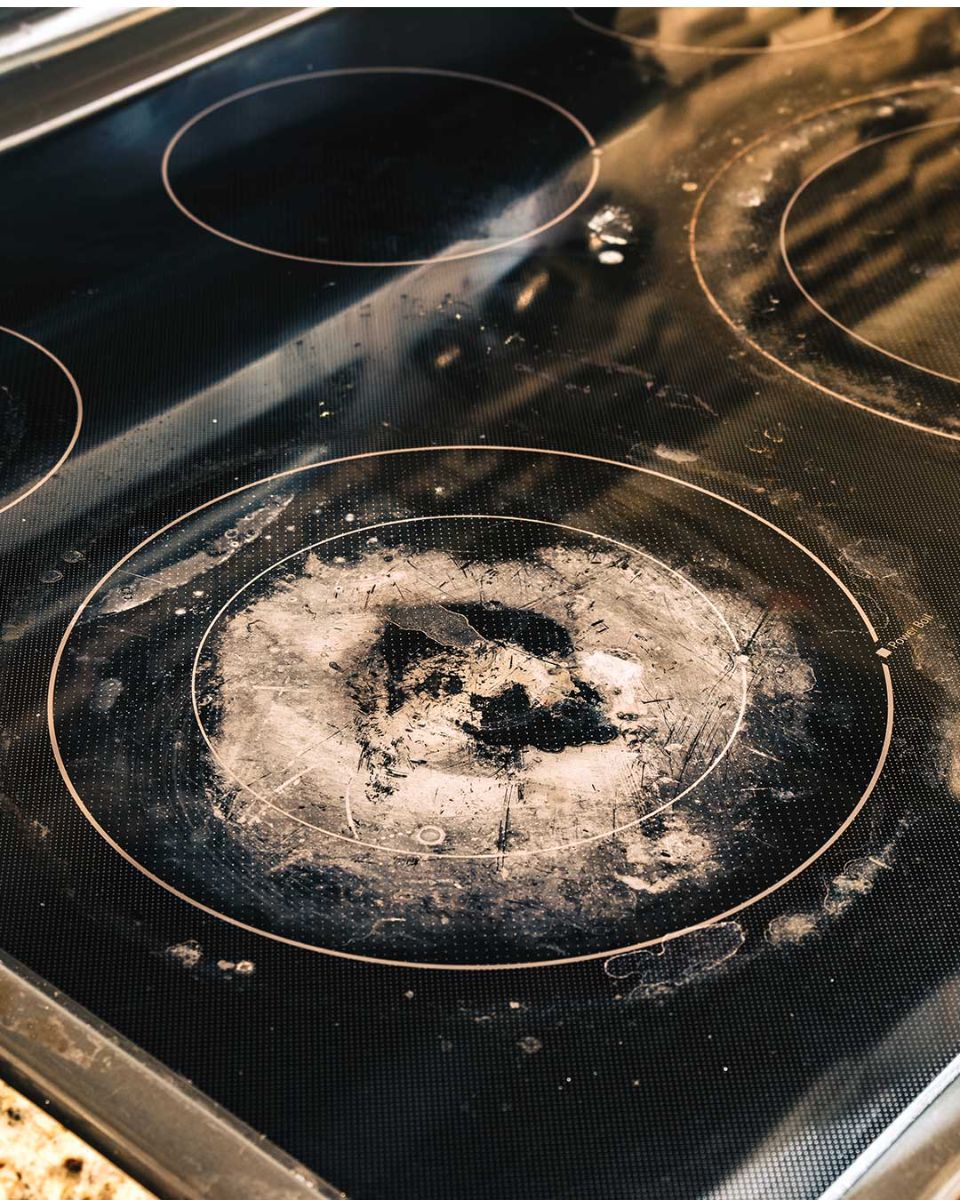ADVERTISEMENT
2. Tackle Tough Stains with Baking Soda
If your stove top has accumulated tougher stains or grease, baking soda can be a miracle worker.
- Sprinkle baking soda directly onto the stove top, focusing on the stained or greasy areas.
- Pour a small amount of white vinegar over the baking soda. The combination will bubble and fizz, which helps lift grime and stains.
- Let the mixture sit for about 10-15 minutes to allow the baking soda and vinegar to break down the residue.
- Using a damp cloth or soft sponge, gently scrub the surface in circular motions, paying extra attention to stubborn spots.
3. Use a Razor Blade Scraper for Burnt-On Food
For burnt-on food or tough, stuck-on messes, a razor blade scraper can be incredibly effective. Here’s how:
- Hold the scraper at a 45-degree angle and gently scrape off any burnt food or residue. Be sure to apply gentle pressure to avoid scratching the glass.
- Always use a clean razor blade designed for glass stove tops to avoid causing damage.
4. Polish the Glass Stove Top
After cleaning, you can restore the shine by using a glass cleaner designed for stove tops or a vinegar solution.
- Spray the cleaner directly onto the stove top and wipe it down with a soft cloth or paper towel to remove streaks and add shine.
- For a natural option, you can make a mixture of equal parts white vinegar and water. Spray this onto the surface, then wipe away with a microfiber cloth for a sparkling finish.
5. Prevent Future Damage with Regular Maintenance
To prevent your glass stove top from becoming gross or damaged in the future, consider these preventative measures:
- Clean after each use: Wipe down your stove top after each cooking session to avoid buildup of grease and food spills.
- Avoid abrasive cleaning tools: Never use steel wool, abrasive sponges, or harsh chemicals, as these can scratch and damage the surface.
- Use burner protectors: You can buy protective mats or pads that help prevent spills and scratches from happening in the first place.
- Be cautious with cookware: Avoid using pots and pans with rough bottoms, as these can scratch the glass surface.
What to Do If Your Glass Stove Top Is Damaged
If, after cleaning, you notice cracks, chips, or scratches on your glass stove top, you may need to take further action:
- Small scratches: While minor scratches are unavoidable over time, they don’t usually affect the performance of the stove. You can try ceramic stove top polish to reduce the appearance of minor scratches and keep the surface looking shiny.
- Cracks or large chips: If your glass stove top is cracked or chipped, it’s essential to replace it, as these types of damage can compromise the stove’s safety and efficiency. Contact a professional to assess and replace the damaged glass.
Final Thoughts
A glass stove top is a beautiful addition to any kitchen, but it requires regular cleaning and proper care to maintain its shine and functionality. By following these simple steps—using mild cleaners, baking soda, vinegar, and a razor blade scraper—you can restore your stove top’s appearance and keep it in great condition for years.
For heavy-duty cleaning, always remember to use the right tools and products specifically designed for glass stove tops, and avoid harsh abrasives that could cause damage. With a little routine maintenance, your glass stove top will continue to shine, and your kitchen will look spotless!
ADVERTISEMENT
